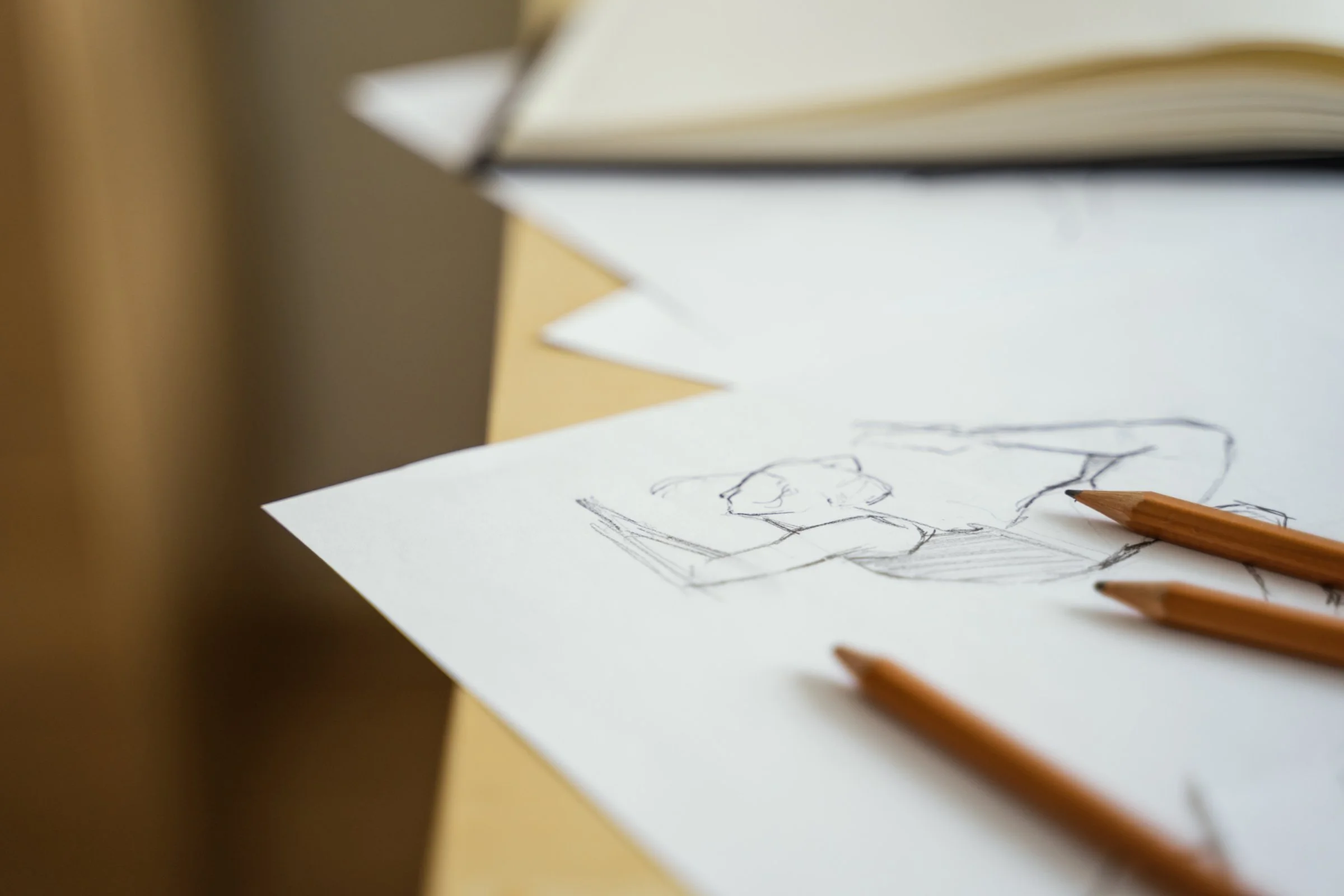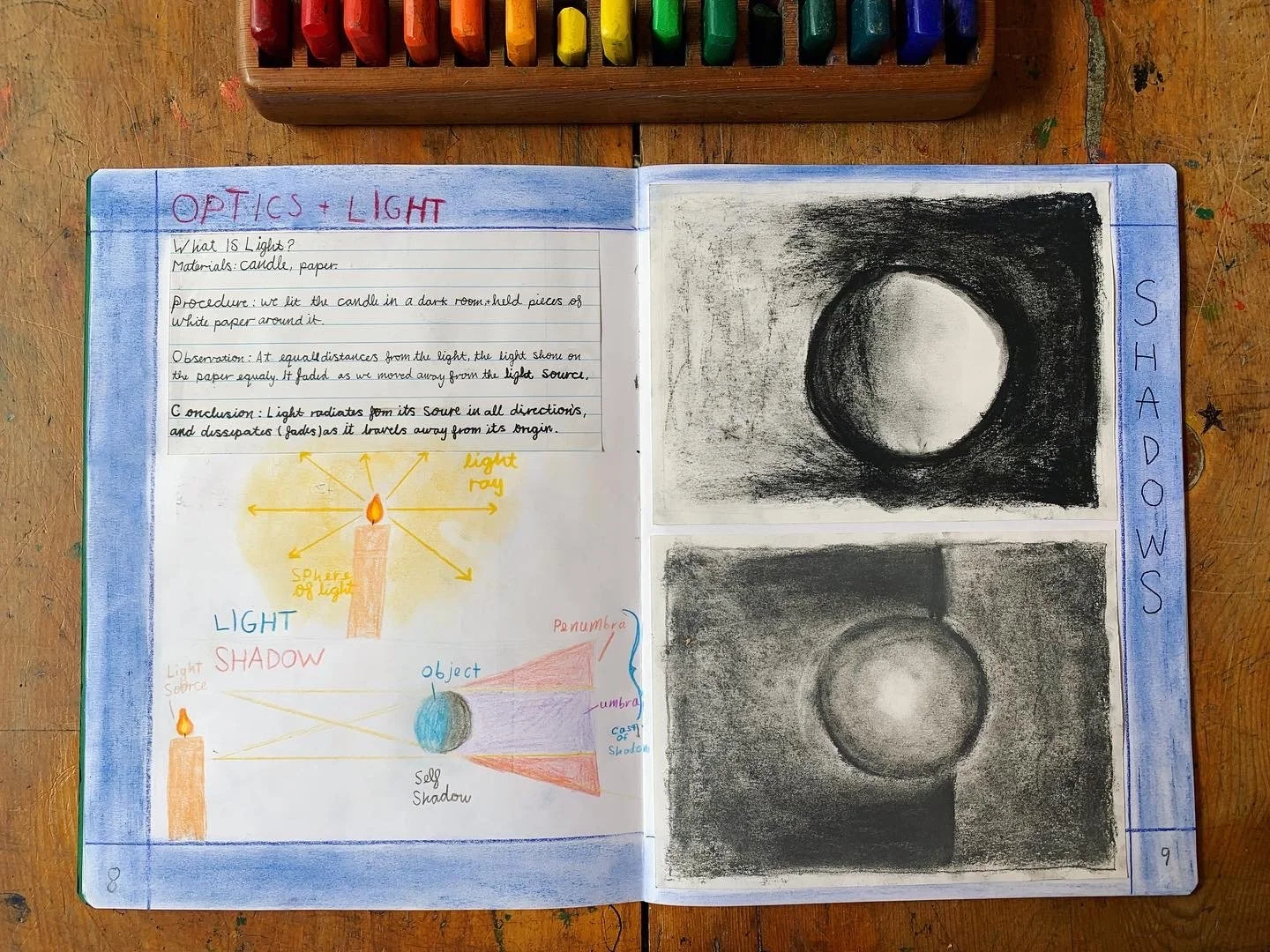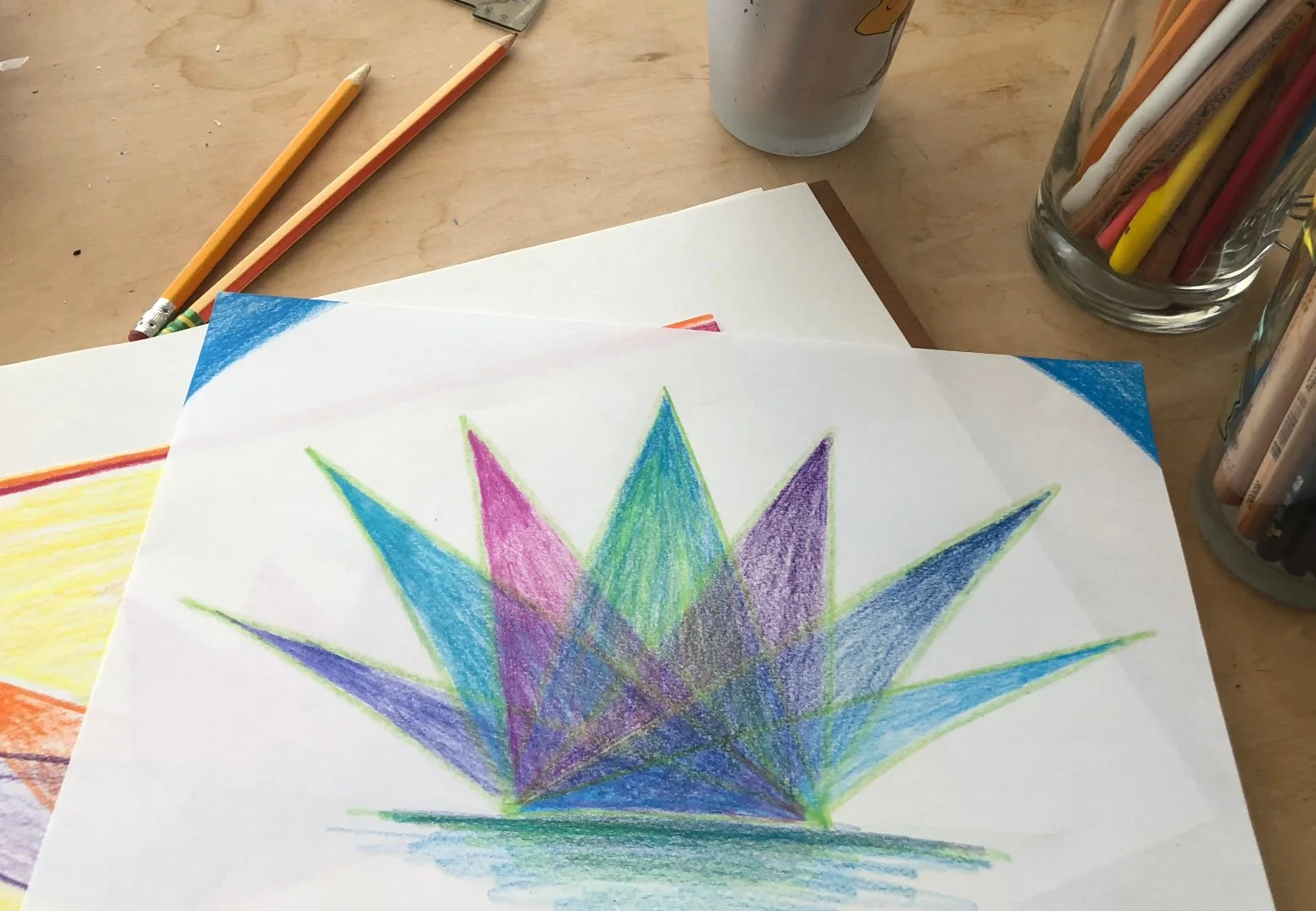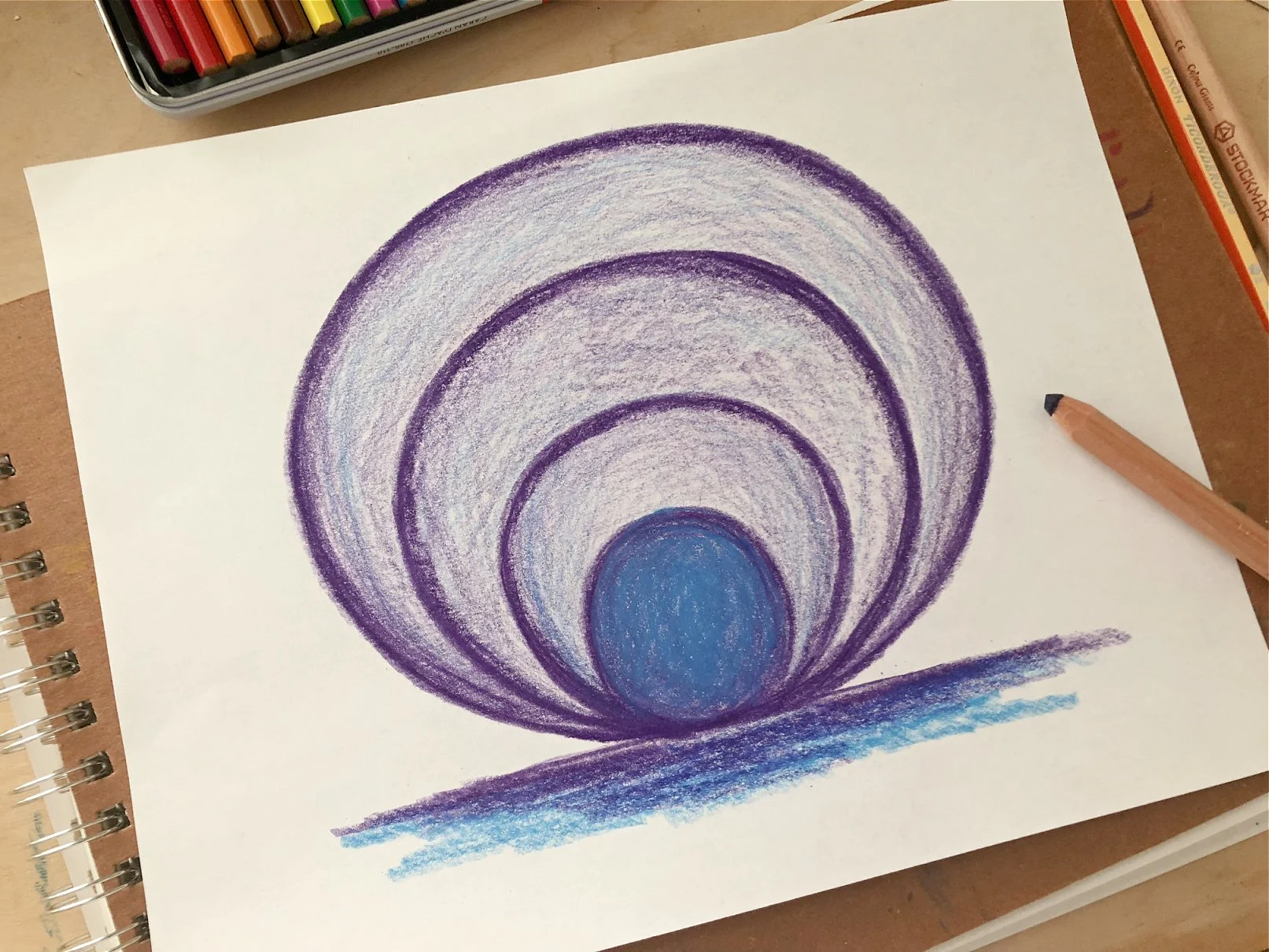The Waldorf Geology Block: Curriculum for the Transforming Child
An exciting aspect of the sixth grade Waldorf curriculum is a new area of study: Geology!
Of course, students have been studying the earth since the beginning of their academic journeys: agriculture in third grade, gardening class, and more!
This block is sometimes given the title “Mineralogy,” which we are intentionally choosing not to use here. Mineralogy is it’s own vast subject under the umbrella of Geology - one that requires an understanding of general geologic concepts. In sixth grade, the curriculum touches upon the formation of different minerals, but the goal is to really live into Geology and all the basic concepts that lead into more complex studies in the future.
Chalk is a wonderful medium to use in a geology block- it provides color, texture, and dimension!
The curriculum of the whole sixth grade year marks an important shift in the approach to learning, and it’s the perfect time to dive into geology, which means “the study of the earth.”
The sixth grader is beginning the very powerful journey of puberty; a deeply inward experience where their emotions, physical body, relationships, and worldview, all undergo a transformation. Some of these changes are quick and visible, others can be slow burning and invisible to those around them. Emotions can be hot and fiery one day - cold and aloof the next! While some days a sixth grade child may feel like the world is vast, open, and full of potential, just as quickly, it can feel small, closed, and pressure-filled. Physically, the student might feel light, airy, and free… and in the next moment they can just as easily feel heavy, awkward, and slow moving.
Charcoal is a new art medium to the sixth grade curriculum, and can be used throughout the school year- even in geology!
The growing student is experiencing polarities in a very real way- enter in the study of Geology as the perfect mirror!The geology curriculum is designed to meet students just where they are on their journey of conflicting feelings, emotions, and experiences.
Geology is full of great clashes and yet also contains seemingly insignificant subtleties. A volcano can erupt in a dramatic blast of lava and smoke, while sedimentary rock forms slowly under consistent, unseen pressure over millions of years. A mountain slowly grows taller through the process of uplift, or a new underwater trench may suddenly open from a powerful earthquake. Geology is ever moving, ever changing, and through processes that slowly unfold over time, or suddenly flare up without warning. On a deeply personal, soul level, the student connects with the earth and finds a sense of place and comfort- while they undergo great transformation, so too has the earth on which they stand!
Geology challenges the student to think big and small at the same time. They are looking at the earth in a new, far more abstract way than ever before.
Now the educator asks the student to use different thinking skills. What is the earth really made of, down to its core? What does the presence of exposed granite tell us about what may have existed here millions of years ago? What could an earthquake in the present do to the landscape of the future? Let’s think beyond just what we can see and what surrounds us- it’s time to explore the past, the present, and the future!
This is an example of a wet-on-dry painting: watercolor paints used on dry paper.
As well, the study of geology provides a deeply meaningful way to build one’s connection with the four elements and with nature. The experience of being a teenager and puberty can be one that brings forth real loneliness and feelings of separateness. A growing child may be unsure of where they belong, who they are connected to, and where they fit in socially and emotionally. In geology, the educator can foster a sense of belonging. The four elements, earth, water, air and fire, are found within every human being just as they are in geology.
The sixth grader is in a very important and often poignant point in their development, where so much is happening for them on and beneath the surface. The geology curriculum is designed to meet them right where they are. Just like the earth, the student is in a continuous and often intense point of transformation – and whether these changes are dramatic or subtle, they matter!
As with all things in Waldorf education, diving into a curriculum that truly meets the child is a deeply meaningful way to build the students’ knowledge, connection to nature, and relationships with themselves and others.
About the Authors
Robyn Beaufoy is Waldorfish’s CEO, and also a course instructor for Simple Season (coming soon!), Waldorf Art for Beginners, and Weekly Art Foundations. You’ll find her intuitive touches and influences throughout everything Waldorfish offers. Robyn has been in the world of education for over 25 years, with an MA in Education and a certification in Waldorf teaching - she also homeschooled both of her children for some of that time. In 2012 Robyn co-founded Waldorfish.com, creating it with the vision of making Waldorf inspired-art and pedagogy more accessible, joyful, and doable for homeschoolers all over the world.
Caitlin Amajor is Waldorfish’s course instructor for Geometry grades 5 & 6, and Botany, as well as our Administrative Assistant. From a young age, Caitlin has been immersed in Waldorf education, attending a Waldorf school from K-8. After receiving a BA in History, Caitlin gained her certification in Waldorf teaching, and spent seven years as a Waldorf class teacher in the upper grades. With a special fondness for watercolor painting and geometry, Caitlin loves bringing Waldorf education to her students all over the world, and seeing their own individuality and style bloom from the curriculum!











